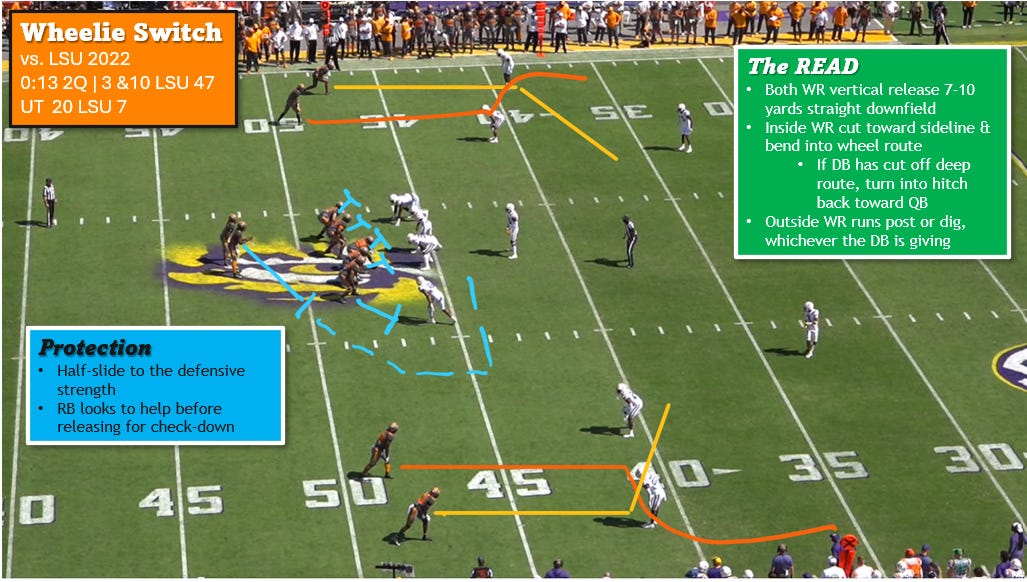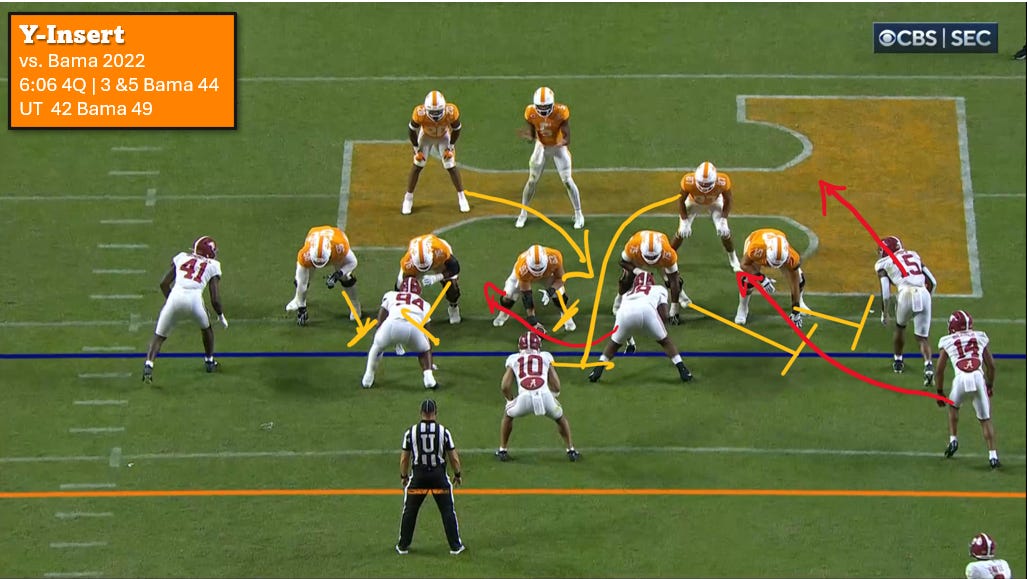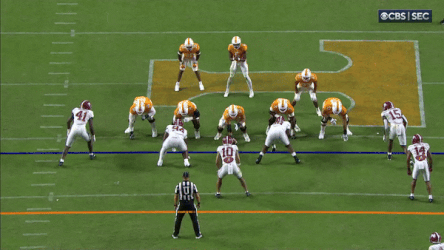The Tennessee Playbook, Part 3: What for Third Down?
Third Down for Whom? Whomst?
This is the third installment of a series looking at what plays Josh Heupel and the Tennessee offense run in various situations [Part 1a: Game-Opening Passes | Part 1b: Game-Opening Runs | Part 2: Short Yardage].
Part 3 of The Tennessee Playbook will take a look at what plays Tennessee runs on third-and-medium and third-and-long situations under Josh Heupel. As always, the information about play calls and concepts comes from secstatcat.com ($).
Tennessee’s offense runs smoothest when it stays out of 3rd-down situations altogether. That might seem obvious, and probably holds true for most offenses. But when you think about what UT is trying do accomplish with the up-tempo style it plays, 3rd downs become a particular stumbling block. The Vols slow down on 3rd downs to make sure everyone is on the same page, and to make sure the best play is dialed up.
Fortunately, Tennessee is pretty good at staying out of 3rd downs. During the Butch Jones and Jeremy Pruitt years, UT averaged about 13 3rd-down attempts per game (except 2015, when Tennessee’s offense found itself in a whopping 16.2 3rd downs per game). That number is similar under Josh Heupel—about 13 snaps of 3rd down per game—but because UT runs so many more plays per game, 3rd downs make up a much smaller percentage of the total plays called.
The badish news is that Tennessee doesn’t do a great job of converting 3rd downs. The Vols have converted 42.8% of 3rd downs under Heupel, with the ‘21 team having the best rate of 44.7% (#24 nationally) and somewhat surprisingly the ‘22 team having the lowest rate at 41.6% (#43 nationally). However, only a handful of teams each year finish with a conversion rate over 50%, so being in the 40% range isn’t terrible. And obviously, not being great on 3rd down didn’t stop that 2022 offense from being elite (they also found themselves in the fewest 3rd downs, probably not a coincidence).
So what does Tennessee run on 3rd down? If you’ve read the other installments in this series, you won’t be surprised to learn that Inside Zone Read and Screens are the top run and pass scheme used on 3rd downs. Since how Tennessee runs those plays has been covered in the past, and since the last installment covered 3rd-and-short, I’m going to look more specifically at successful 3rd-and-long/3rd-and-medium calls.
3rd and the River
In 3rd-and-long situations (with 7 or more yards to go) Tennessee does what you’d expect: they throw the ball. In 65 successful (converted) 3rd and longs under Josh Heupel, Tennessee has run the ball just 10 times, thrown 47 passes, and seen another 8 called passes turn into QB scrambles.
Tennessee’s favorite concept when backed up in 3rd & long is the Vertical Switch, particularly what’s called Wheelie Switch. On a Vertical Switch, receivers cross each other, causing all kinds of problems for the defense—potentially making defenders set a pick or rub for each other, confusing defenders as to which man to cover, and just generally making the defense play more disciplined than they probably want to. Here’s a great example of Wheelie Switch from right before halftime of the 2022 LSU game:
Play in action:
The key to the read is at the moment the WRs cross over. You can see the deep wheel route has been taken away, but both the safety over the top and the nickel/LB have their back to the middle of the field, leaving the post/dig wide open:
This is what makes vertical switches like Wheelie Switch so effective—there’s a lot for the secondary to think about and react to quickly, creating a lot of busts in coverage.
3rd & Medium
Just like in 3rd & short situations, Tennessee’s favorite play on 3rd & medium (4-6 yards to go) is Tosser, or all slants. Slants have accounted for 17.8% of UT’s successful 3rd & medium conversions under Josh Heupel, but what was the biggest 3rd & medium conversion of the last 3 years? I think I found it.
Having lead Alabama all day, Tennessee found themselves suddenly trailing 49-42 in 2022 after a scoop-and-score turnover put the Tide in the lead. With time winding down, the Vols needed to answer in order to keep the game from slipping away. On a 3rd-and-5 from midfield, Tennessee turned to Jaylen Wright and my personal favorite run scheme, Insert (or Iso, as it used to be called). Bama chooses the wrong gap to blitz, and UT converts on a picture-perfect Y-Insert:
It actually looks like this play might have been called to the opposite A gap than where it ends up, but because of how the defense stunts, an adjustment was made:
Either way, it worked.
So there you have the Josh Heupel and Tennessee approach to 3rd downs. The next and final installment of this series will take a look at the most explosive schemes Tennessee has used under Heupel over the last three seasons, and what you might expect to see for the 2024 season as well.







